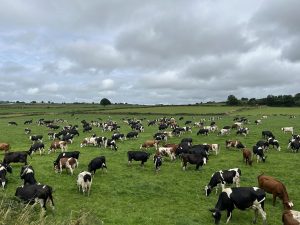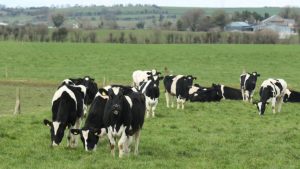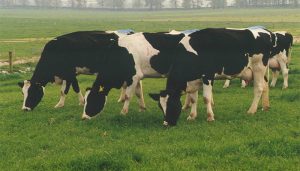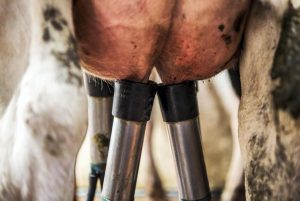
With Irish farmgate milk prices now among the highest in the EU, dairy farmers here have benefited from weekly EU wholesale prices continuing to rise through March and the first half of April. It comes despite prices on the New Zealand-based GDT trading platform easing slightly since March 1.
Irish milk prices in 2022 could be 20% to 30% higher than in 2021, on average, says Teagasc. However, some farmers have significant shares of their output in fixed milk prices contracts, well below the prevailing spot milk prices, and they will be hit by falling income.
The war in Ukraine has led to a further dramatic increase in energy prices, and fertiliser and feed availability for 2022 have become uncertain. Irish milk production costs could jump 30% from the 2021 level, but Teagasc goes on to predict that in spite of the dramatic increase in input costs, the very high milk prices may be sufficient to maintain dairy profit margins and incomes on most farms this year.
Intensive users of purchased inputs, and farmers dependent on hired labour, will likely see the greatest impact on the cost of production, according to the recently updated Teagasc Situation and Outlook for Irish Agriculture report. But it was noted that the average net margin per hectare and income levels in 2022 should be broadly in line with the 2021 figures.
Glanbia milk payments
In response to the extreme and unprecedented inflation in farm inputs, the Board of Glanbia Co-op has announced a six-month pilot change in the timing of milk payments, which includes a new early milk payment each month, commencing with the June milk payment in July, when about 50% of the price due to milk suppliers will be paid early (on June 9 rather than June 18).
Then, when the milk price for the month is set, the remaining balance due will be paid by June 25. Any deductions due on milk accounts will be split evenly between the two payment dates.
Glanbia Co-op Chairman John Murphy said: “In this period of extreme input cost inflation, the Co-op Board believes that an early milk payment each month will assist our farmers by providing a more regular cash inflow approximately every fortnight.
“The board has agreed to implement this payment structure on a pilot basis for the second half of 2022.”
Glanbia Co-op has also decided this month to start creating a stability fund “to protect both suppliers and our farmer-owned business”.
Chairman John Murphy said: “We are in unchartered territory as rising costs and tight supplies of key farm inputs such as feed and fertilizer contribute to the current strength in dairy prices on global markets.”
“While tight global milk supplies and the need to cover rising costs have supported prices in recent months, there will inevitably come a time when high prices cause a reduction in demand and a subsequent price correction,” said dairy markets analyst Katherine Jack of the UK’s Agriculture and Horticulture Development Board, commenting after the GDT global trading platform index fell 1% on both March 15 and April 5, and by 3.6% on April 19.
Milk prices
The price declined for all products traded at the latest event. The GDT primarily facilitates trades from New Zealand and Australia to Asia, so Asian demand has a stronger influence on GDT prices.
The AHDB analyst said it may not be the case that prices in other regions will follow the GDT trend. Covid-19 lockdowns in China and the resulting logistics chaos were partly blamed for the latest GDT price fall.
The most recent EU Commission milk price report for member states (February) had higher milk prices than Ireland only in Malta and Cyprus (respectively €61.90 and €58.40 per 100kg compared to €47.50 in Ireland).
The price also exceeded €45 in Denmark, Lithuania, Greece, Belgium, and the Netherlands. Only in Romania, Slovakia, Bulgaria, Hungary, Slovenia, Spain, Croatia, and Portugal was the estimated February milk price under €40.
Dairy markets are likely to stay strong because unfavourable weather in New Zealand and South America points to lower global milk production growth in 2022, and the war in Ukraine has created further new uncertainties putting a brake on global milk production growth.
Meanwhile, international dairy product demand remained solid, in spite of higher prices. China remains an important source of demand, along with oil-exporting countries benefiting from high oil prices.
With price levels also high for some vegetable oils used as dairy alternatives, increased dairy commodity prices may have only a limited impact on dairy demand.

























